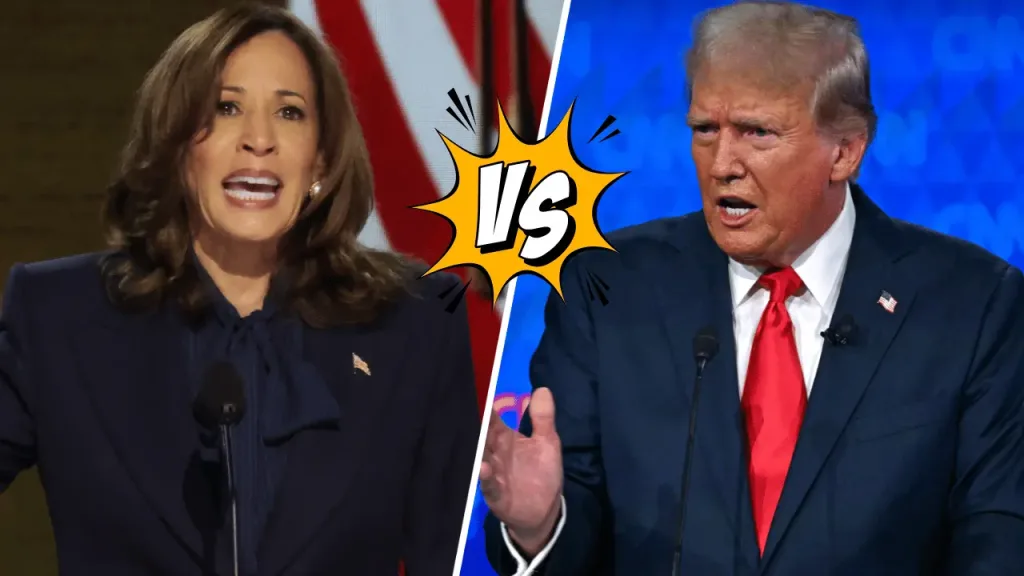What Does “Toss-Up” Mean in U.S. Elections? A Deep Dive Into Its Impact and Implications!
In U.S. elections, a “toss-up” refers to a race that is highly competitive and could swing either way, with no clear front-runner. This term signifies that an election result is too close to call, often due to closely matched candidates or unpredictable voter sentiments.
Being familiar with toss-up races is crucial in gauging the balance of political power and identifying the competitive landscapes in U.S. elections. For both political analysts and the voting public, identifying toss-up states and districts offers insights into potential outcomes and shifts in policy direction.
Key Data Points
- 2022 Midterms: Nearly 10% of congressional races were classified as toss-ups.
- Voter Turnout: Toss-up states regularly see heightened voter engagement, sometimes surpassing national averages.
- Historical Benchmark: Toss-ups tend to increase during periods of high political polarization and can have a significant impact on election outcomes.
Table of Contents
In U.S. elections, seeing toss-up races can be the difference between accurately forecasting political control and missing crucial shifts in power. Toss-up states and districts are among the most watched as they can determine control of legislative bodies like Congress or even the presidency. Data shows that in recent election cycles, a larger number of races have been considered toss-ups due to closely divided public opinion and rising voter turnout. Experts from the Cook Political Report and FiveThirtyEight often mark these races as essential battlegrounds.

What Defines a Toss-Up in U.S. Elections?
A race is classified as a toss-up when polls and historical trends suggest neither candidate holds a definitive advantage. In the U.S., this is often seen in:
- Presidential Elections: Some states, often referred to as swing states, can be toss-ups.
- Congressional Races: Competitive House and Senate races frequently fall into the toss-up category when there’s no clear preference for either party.
- Polling Margins: Toss-ups are frequently characterized by polling margins within the statistical error range, usually +/- 3%.
Industry Insight: “Toss-up races are incredibly dynamic and often see the highest levels of campaign spending, as both sides are fully committed to winning them,” says political analyst Amy Walter of the Cook Political Report.
Why Toss-Ups Are Critical for Political Strategy
- Resource Allocation: Parties dedicate significant resources to toss-up races. For instance, data from the 2020 election revealed that 70% of all campaign funding was concentrated on toss-up states.
- Voter Engagement: Toss-ups drive voter turnout as both parties invest in get-out-the-vote (GOTV) efforts. According to Pew Research, voter turnout in swing states often exceeds the national average by over 5%.
- Media Attention: News coverage of toss-up races can influence voter perception, making these regions central to both national media and local news cycles.
Historical and Recent Examples of Toss-Up Races
- 2020 Presidential Election: Key states like Pennsylvania, Michigan, and Arizona were considered toss-ups and ultimately decided the election.
- 2022 Midterms: Races in Georgia, Nevada, and Arizona were categorized as toss-ups, leading to increased national focus and competitive spending.
Case Study: In the 2020 presidential election, Arizona emerged as a toss-up for the first time in decades, a trend influenced by demographic shifts and changing political attitudes.
Factors Associated with Toss-Up Races
- Demographics: Shifts in demographics can turn previously predictable regions into toss-up zones.
- Economic Conditions: Voter sentiment on economic issues, such as inflation and employment, significantly impacts toss-up races.
- Social and Cultural Issues: Heightened national discussions about healthcare, education, and civil rights often amplify voter interest in competitive races.
Related Articles For You:
Can Guam Vote in U.S. Elections? Voting Rights of U.S. Territories
Practical Applications
Example Case 1: Battleground States in Presidential Elections
- Context: Presidential races are frequently hinge on toss-up states like Florida and Pennsylvania.
- Obstacles: With polarized voter bases, campaigns must address diverse concerns and invest heavily in tailored messaging.
- Outcomes: Winning a key toss-up state can be the deciding factor in a close election, as seen in several recent cycles.
Example Case 2: Toss-Up Congressional Races
- Scenario: In midterms, a district with rapidly shifting voter demographics can become a toss-up.
- Approach: Candidates engage in heavy community outreach to connect with undecided voters.
- Results: Flip results are common, such as the Republican gain in Virginia’s 7th District in 2022, previously held by Democrats.
Strategic Planning
- Long-Term Monitoring: Political strategists track emerging toss-ups as early indicators of broader national trends.
- Goal Setting: Success in toss-ups is often defined by gaining incremental voter support and swaying undecided or independent voters.
- Progress Metrics: Parties track shifts in polling, voter turnout projections, and early voting data in toss-up areas.
Expert Section
- Professional Insight: Political strategist Nate Silver states, “In toss-up races, turnout and last-minute shifts in public opinion are everything. Campaigns in these areas need to be extremely agile.”
- Specialist Perspective: Electoral data analysts from Pew Research emphasize the influence of local issues in toss-up races, noting that “localized concerns often override national narratives in these key districts.”
Key Takeaways
- Toss-up races are unpredictable and can significantly impact political power distribution.
- They demand substantial campaign resources and are closely monitored for potential shifts.
- Winning toss-up races consistently requires addressing specific, localized voter concerns.
Conclusion
In summary, toss-up races are among the most critical and watched components of U.S. elections, representing areas where the political landscape is highly competitive and fluid. These races have implications that reach far beyond local districts, influencing national policy and the overall balance of power. By understanding what makes a race a toss-up, voters, analysts, and political strategists alike can gain deeper insight into the forces shaping U.S. politics.
About the Author

Sarah Klein, JD, is a licensed attorney and legal content strategist with over 12 years of experience across civil, criminal, family, and regulatory law. At All About Lawyer, she covers a wide range of legal topics — from high-profile lawsuits and courtroom stories to state traffic laws and everyday legal questions — all with a focus on accuracy, clarity, and public understanding.
Her writing blends real legal insight with plain-English explanations, helping readers stay informed and legally aware.
Read more about Sarah
